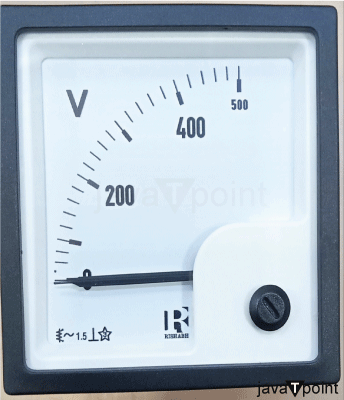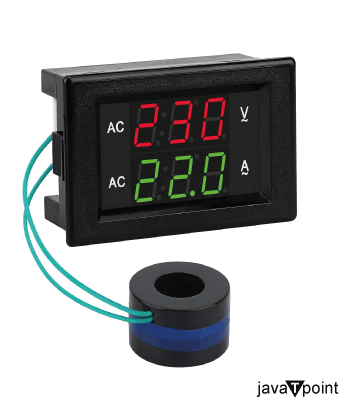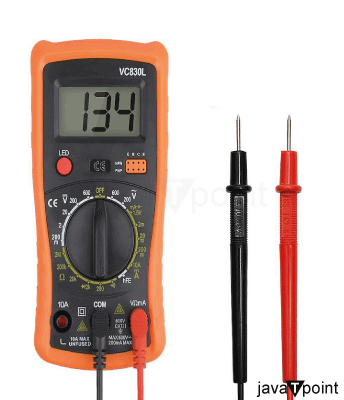Advantages of Digital Voltmeter
Introduction:
In the world of electrical engineering and electronics, a voltmeter stands as an indispensable tool, empowering engineers, technicians, and enthusiasts to measure and understand electrical potential with precision. The voltmeter, also known as a voltage meter, is a device that measures the voltage or potential difference between two points in an electrical circuit. It plays a fundamental role in diagnosing electrical problems, testing circuit performance, and ensuring the safe operation of electronic devices. In this article, we delve into the workings and significance of the voltmeter, exploring its applications and how it has revolutionized the field of electrical measurements.
Working of a Voltmeter:
At its core, a voltmeter is essentially a high-resistance meter connected in parallel to the circuit being measured. When voltage is applied across the meter's terminals, a small current flows through the meter's internal resistor, producing a deflection on the meter's display. This deflection is directly proportional to the voltage being measured, allowing the user to read the voltage value with great accuracy.
Analog Voltmeter:

Analog voltmeters use a moving pointer or needle to indicate the measured voltage on a scale. They are typically based on the principle of electromagnetic induction. When a voltage is applied across a coil inside the meter, it generates a magnetic field that interacts with a permanent magnet, causing the pointer to deflect on the scale, indicating the voltage value. Analog voltmeters are simple and inexpensive but may have limited accuracy and readability compared to digital voltmeters.
Despite its timeless charm and historical significance, the analog voltmeter does have some downsides that have led to its decreased popularity in certain applications.
- Limited Precision: Analog voltmeters are generally less precise than their digital counterparts. The mechanical components and sensitivity of the galvanometer can introduce errors and inaccuracies, especially when reading small voltage values. Digital voltmeters offer higher accuracy and resolution.
- Subject to Parallax Error: Reading the needle position on an analog scale requires careful observation from a specific angle to avoid parallax error. If the observer's line of sight is not perpendicular to the scale, it can lead to inaccurate readings.
- Limited Range and Sensitivity: Analog voltmeters often come with limited measurement ranges, requiring multiple devices or range switching for different voltage levels. High-sensitivity measurements are also challenging due to the mechanical limitations of the galvanometer.
- Slower Response Time: Analog voltmeters typically have slower response times compared to digital voltmeters. Their mechanical movement takes time to settle, making them less suitable for rapidly changing or transient measurements.
- Subject to External Interference: Analog voltmeters can be influenced by external magnetic fields, vibrations, or shock, leading to inaccurate readings or disturbances in the needle movement.
Digital Voltmeter (DVM):

Digital voltmeters emerged as a significant advancement in electrical measurement during the latter half of the 20th century. Before the digital era, analog voltmeters with moving pointers were the norm. However, analog meters had limitations in terms of accuracy, readability, and resolution. The advent of semiconductor technology and integrated circuits paved the way for digital instruments, introducing a new era in electrical measurements.
A digital voltmeter (DVM) is an electronic instrument used to measure voltage (electrical potential difference) between two points in an electrical circuit. Unlike analog voltmeters that use moving pointers or needles, digital voltmeters display the measured voltage as numerical values on a digital screen. This makes them easy to read and interpret, offering higher accuracy and precision in voltage measurements. Digital voltmeters are widely used in various fields, including electronics, electrical engineering, telecommunications, automotive diagnostics, and more.
Multimeters:

A multimeter is a versatile electrical measuring instrument that combines the functions of a voltmeter, ammeter, and ohmmeter into a single device. It can measure voltage, current, and resistance in electrical circuits. Digital multimeters (DMM) are the most common type of multimeter today, and they often include additional features such as capacitance measurement, diode testing, and continuity checking.
Advantages of Digital Voltmeter
Digital voltmeters offer several advantages over traditional analog voltmeters. Here are some of the key benefits of using a digital voltmeter:
- Accuracy:
The primary advantage of digital voltmeters lies in their ability to provide highly accurate and precise voltage readings. Unlike analog voltmeters, which rely on subjective readings from a scale, DVMs display voltage measurements as numerical values. This feature allows for higher resolution, often presenting measurements with several decimal places, ensuring greater precision in analyzing electrical systems.
- Readability:
Digital voltmeters offer exceptional readability, eliminating the need for interpreting needle positions on an analog scale. The clear and easy-to-read numerical display simplifies voltage readings, reducing the chances of human errors in observation. This feature is particularly advantageous in critical applications, where precise readings are crucial for proper diagnosis and maintenance. Their clear digital displays, intuitive interfaces, and easy-to-use controls require minimal training to operate effectively. This accessibility makes DVMs suitable for a wide range of users, from seasoned professionals to students and enthusiasts.
- Fast Response:
Digital voltmeters have fast response times, which means they can quickly adapt to changing voltage levels. This feature is particularly beneficial when measuring dynamic or rapidly fluctuating voltages.
- Range and Resolution Selection:
Many digital voltmeters offer multiple voltage ranges and resolution settings. Users can easily adjust the meter to measure a wide range of voltages, from small signals to higher voltage levels, simply by selecting the appropriate setting.
- Auto-ranging:
Modern digital voltmeters are equipped with auto-ranging functionality. This feature automatically selects the most appropriate voltage range based on the magnitude of the measured signal. The meter dynamically adjusts its sensitivity, ensuring the optimal display range for the given voltage level. Auto-ranging eliminates the need for manual range selection, making measurements quicker and more efficient, especially when dealing with fluctuating voltage signals.
- Integration with Other Functions:
Many DVMs incorporate multiple measurement functions within a single instrument, making them versatile and cost-effective. Beyond voltage measurements, these multi-function devices can often measure current, resistance, capacitance, frequency, and temperature and perform diode testing. Their flexibility equips professionals and hobbyists with a comprehensive toolkit for various electrical tasks.
- Built-in Display Hold Function:
Digital voltmeters often have a "Hold" function that freezes the displayed reading on the screen. This is especially useful when measuring in hard-to-reach or hazardous locations, allowing the user to safely read the value after removing the test leads.
- Digital Communication:
Incorporating modern technology, many digital voltmeters are equipped with data-logging capabilities. This allows users to record and store measurement data over time, enabling further analysis and comparisons. Moreover, digital voltmeters often feature connectivity options such as USB or Bluetooth, facilitating data transfer to computers or other devices for comprehensive analysis and documentation.
- Portability and Battery Power:
Digital voltmeters are generally compact and lightweight, making them easy to carry around. They are often battery-powered, providing flexibility and allowing measurements in locations without a readily available power source. DVMs are designed to be energy-efficient, consuming less power compared to analog voltmeters. This energy-saving characteristic makes them suitable for battery-powered applications, ensuring extended operation without frequent battery changes.
- Durability and Reliability:
Digital voltmeters are built to be more robust and reliable than their analog counterparts. They are less susceptible to damage from shocks or vibrations, making them suitable for various industrial and field applications.
- High Input Impedance:
Digital voltmeters typically boast high input impedance, meaning they draw very little current from the circuit being measured. This feature minimizes the impact of the meter on the circuit and ensures that the voltage measurements remain unaffected by the presence of the meter itself. High input impedance is especially valuable when measuring sensitive electronic circuits or high-impedance devices.
- Safety Features:
Modern digital voltmeters often include safety features like overload protection and fused inputs. One of the most critical safety features in DVMs is overload protection. Electrical circuits can experience sudden voltage spikes or transients, which can damage the voltmeter or lead to incorrect readings. Overload protection circuits within DVMs prevent such scenarios by limiting the maximum voltage that can be applied to the instrument. If the input voltage exceeds the allowed range, the DVM will display an overload warning or automatically switch to a higher range if available.
Conclusion:
Digital voltmeters have prospered in a new era of electrical measurement, providing engineers, technicians, and hobbyists with precise, efficient, and versatile tools. Their accuracy, readability, auto-ranging, and multi-functionality advantages empower professionals to diagnose and troubleshoot electrical systems with confidence. As technology continues to advance, digital voltmeters will remain indispensable instruments in the ever-evolving world of electrical engineering and electronics. Embracing the power of digital voltmeters unlocks a world of possibilities, ensuring electrical measurements reach new heights of accuracy and efficiency.
|



 For Videos Join Our Youtube Channel: Join Now
For Videos Join Our Youtube Channel: Join Now









